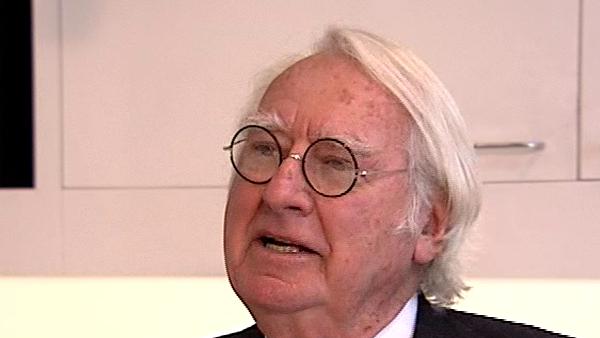NEXT STORY

The pleasure of creating public spaces
RELATED STORIES

NEXT STORY

The pleasure of creating public spaces
RELATED STORIES


|
Views | Duration | |
|---|---|---|---|
| 21. Conscious modern building | 217 | 02:56 | |
| 22. The pleasure of creating public spaces | 159 | 05:30 | |
| 23. The importance of the public spaces within a building | 236 | 01:12 | |
| 24. The Neugebauer House | 472 | 04:45 | |
| 25. Light and white | 413 | 02:35 | |
| 26. Building in context | 237 | 03:29 | |
| 27. The birth of a project | 212 | 01:27 | |
| 28. My design process | 1 | 516 | 01:11 |
| 29. The New York Five | 363 | 03:46 | |
| 30. Changes in the architectural community | 125 | 03:29 |


One of the things which makes working today different from, say, 20 years ago, is the consciousness of the need to make buildings which are not only ecologically sensitive but which also reduce energy consumption and are thoughtful in terms of energy-saving methods. So that buildings, you know, like the Smith House, you know, would no longer be possible today. The code wouldn’t even allow it, you couldn’t have that amount of glass. It’s something of the past and so today, you know, what one has to think about is very judicious use of... of open transparent surfaces in order to maximise the energy-saving elements within a building. And right now, in fact, one of the projects which we’re doing in Italy is... is going to achieve a Platinum Leads Certificate because not only is the building energy efficient in every way, but you know, the water is recycled within the building. Every material is thought about in terms of its longevity and its quality. Every aspect of the building, you know, is, sort of, given a mark, as it were, in terms of it's energy consciousness. So this changes the architecture and it changes the expression of the buildings.
[Q] And for example these glass buildings?
Well, the glass in many of these buildings has a U-coating to reduce the amount of solar gain within the building. It’s probably, at least double, maybe triple glazed, you know, single glazing just wouldn’t be possible in these buildings. It has all kinds of, I would imagine, you know, solar controlling devices.
The prominent American architect Richard Meier (b. 1934) is best known for the Getty Centre in Los Angeles, one of his many public projects which broke from his usual style of sleek, white buildings. In all his work – carried out with characteristic refined style – he refuses to bend to the trends of modern architecture. He has won many awards including the Pritzker Prize for Architecture, considered the field's highest honour.
Title: Conscious modern building
Listeners: Massimo Vignelli
Massimo Vignelli was born in Milan and studied architecture in Milan and Venice. He is the co-founder and President of Vignelli Associates and Chief Executive Officer of Vignelli Designs in New York. His work includes graphic and corporate identity programs, publication designs, architectural graphics, interiors, furniture, and consumer product designs. His work has been published and exhibited throughout the world and entered in the permanent collections of several museums. He has taught and lectured on design in the major cities and universities in the United States and abroad. Included among Massimo Vignelli's awards are the Gran Premio Triennale di Milano, 1964, the Compasso d'Oro, awarded by the Italian Association for Industrial Design (ADI), 1964 and 1998, the 1982 Art Directors Club Hall of Fame, the 1983 AIGA Gold Medal, the 1992 Interior Product Designers Fellowship of Excellence, The 1995 Brooklyn Museum Design Award for Lifetime Achievement and The 2001 Russel Wright Award for Design Excellence.
Duration: 2 minutes, 56 seconds
Date story recorded: March 2007
Date story went live: 23 December 2008